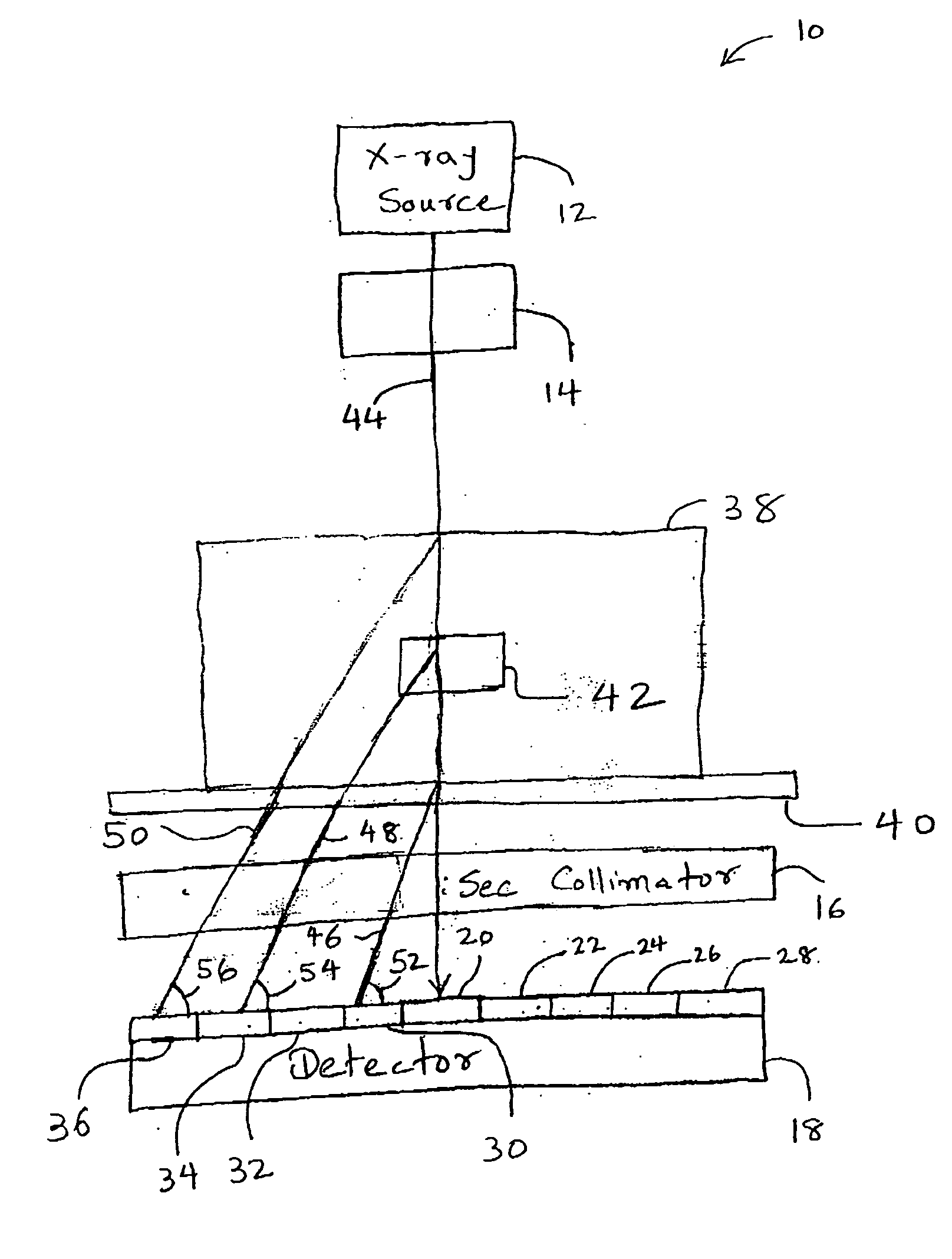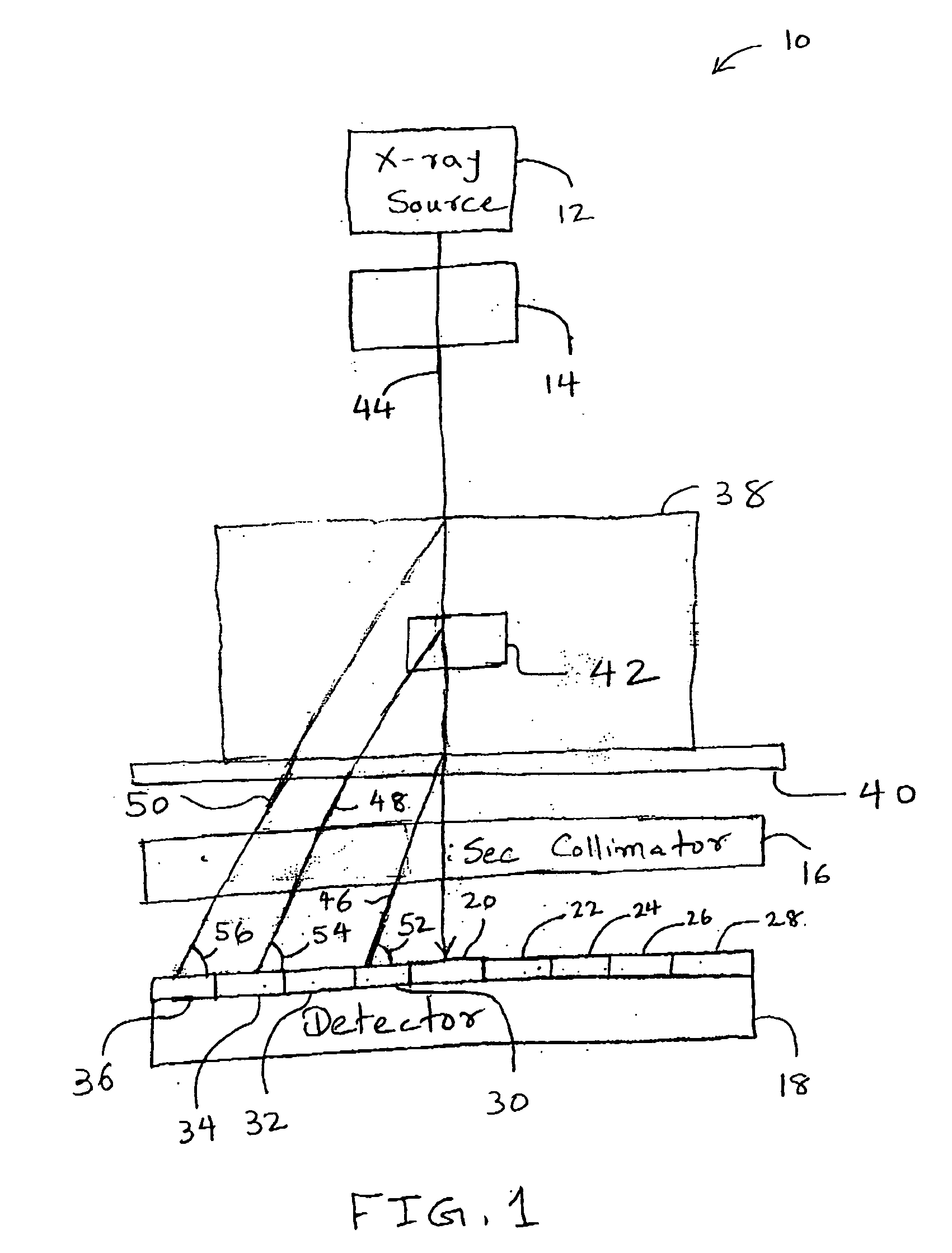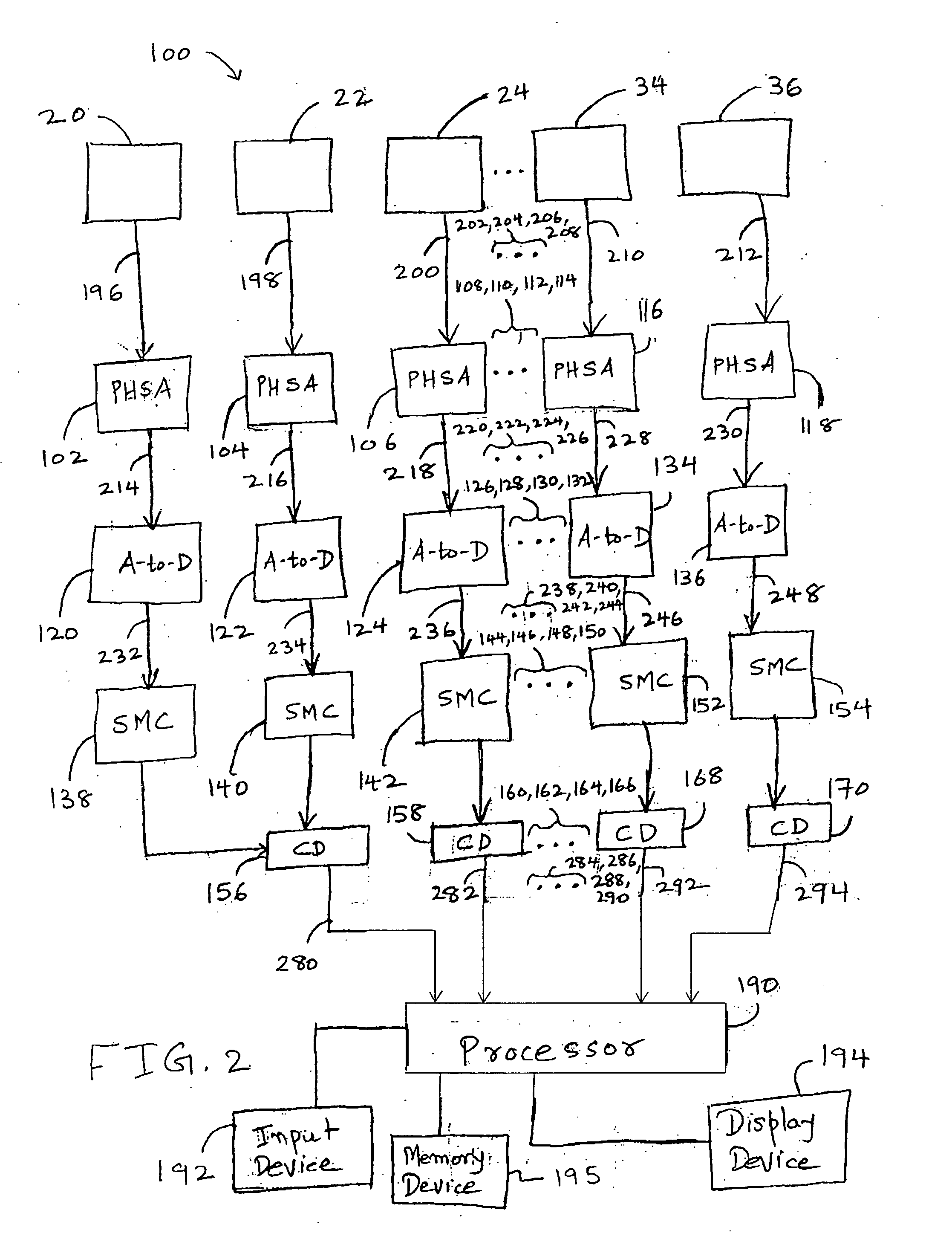Systems and methods for determining an atomic number of a substance
a technology of atomic number and substance, applied in the direction of material analysis using wave/particle radiation, x/gamma/cosmic radiation measurement, instruments, etc., can solve the problem that the xrd identification system for explosive detection and baggage scanning is not yet highly developed, and the detection of harmless materials in certain density ranges and threats such as plastic explosives is not easy to d
- Summary
- Abstract
- Description
- Claims
- Application Information
AI Technical Summary
Benefits of technology
Problems solved by technology
Method used
Image
Examples
Embodiment Construction
[0013]FIG. 1 is a block diagram of a system 10 for determining an atomic number of a substance. System 10 includes an x-ray source 12, a primary collimator 14, a secondary collimator (Sec collimator) 16, and a detector 18. Detector 18 includes a central detector element 20 or a central detector cell for detecting primary radiation. Detector 18 also includes a plurality of detector cells or detector elements 22, 24, 26, 28, 30, 32, 34, and 36 for detecting coherent scatter. Detector 18 includes any number, such as, ranging from and including 256 to 1024, of detector elements. A container 38 is placed on a support 40 between x-ray source 12 and detector 18. Examples of container 38 include a bag, a box, and an air cargo container. Examples of x-ray source 12 include a polychromatic x-ray tube. Container 38 includes a substance 42. Examples of substance 42 include an organic explosive, an amorphous substance having a crystallinity of less than twenty five percent, a quasi-amorphous sub...
PUM
 Login to View More
Login to View More Abstract
Description
Claims
Application Information
 Login to View More
Login to View More - R&D
- Intellectual Property
- Life Sciences
- Materials
- Tech Scout
- Unparalleled Data Quality
- Higher Quality Content
- 60% Fewer Hallucinations
Browse by: Latest US Patents, China's latest patents, Technical Efficacy Thesaurus, Application Domain, Technology Topic, Popular Technical Reports.
© 2025 PatSnap. All rights reserved.Legal|Privacy policy|Modern Slavery Act Transparency Statement|Sitemap|About US| Contact US: help@patsnap.com



